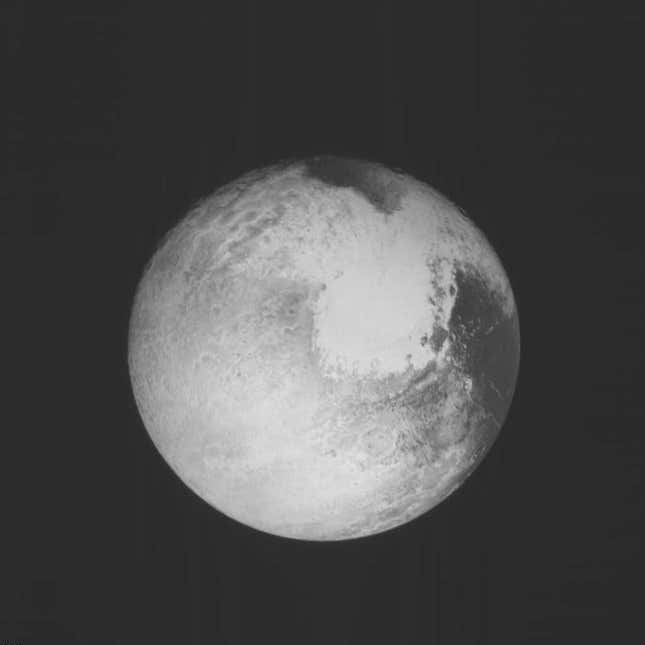The New Horizons team at NASA has brought what was previously a blurred point of light into focus. The spacecraft has already traveled over a million miles past Pluto, but not before it managed to send some incredible new images back to Earth.
This is the first hi-res image of Pluto’s surface taken by NASA’s New Horizons spacecraft:

These mountains are up to 11,000 feet (3350 m) high; Earth’s Mt. Everest is about 29,000 feet at its highest point.
The photos show that Pluto has one of of the youngest planetary surfaces that NASA scientists have ever observed in our solar system. The mountains, which formed no more than 100 million years ago, are most likely made of water ice, which at Pluto’s extremely cold temperatures, behaves more like rock.
NASA also announced that it named the famous heart-shaped region on Pluto the Tombaugh Regio, after Clyde Tombaugh, who discovered Pluto in 1930 and whose ashes are currently flying aboard New Horizons.
Pluto’s largest moon, Charon, is believed to be volcanically active. Scientists thought it might have been an “ancient terrain, covered in craters,” but the newest image shows that’s not really the case:

The dark area near its north pole was nicknamed “Mordor” (after the hellish region in Middle earth). Toward the bottom right, there is a canyon four to six miles deep. The Grand Canyon is only about a mile deep at its deepest point.
New Horizons also took the first resolved image of Pluto’s outermost moon, Hydra, which they discovered is probably comprised of water ice as well.
During the flyby, New Horizons went dark in order to accumulate as much information as possible. As expected, the spacecraft survived the encounter and “phoned home” to NASA around 9pm EST. Then, the downloading began. New Horizons slowly started sending information to NASA’s Deep Space Network station in Canberra, Australia.
Around 11am EST, the Johns Hopkins Applied Physics Laboratory, which operates New Horizons, posted another image of Pluto online that was taken by the spacecraft’s LORRI instrument. Though there’s no color, it shows Pluto from a different angle from Tuesday’s momentous picture:

JHUAPL also uploaded this photo of Pluto’s moon Charon:

And here is the New Horizons team, along with internet favorite Bill Nye, reacting to the flyby on Tuesday:
